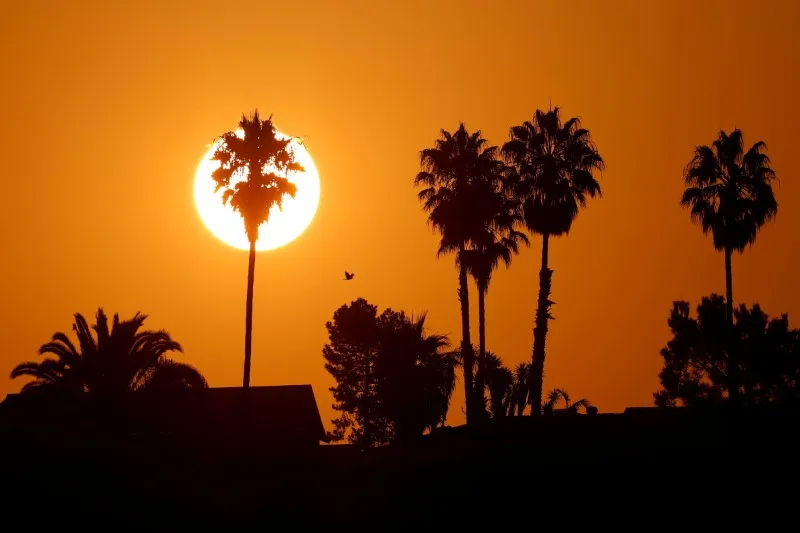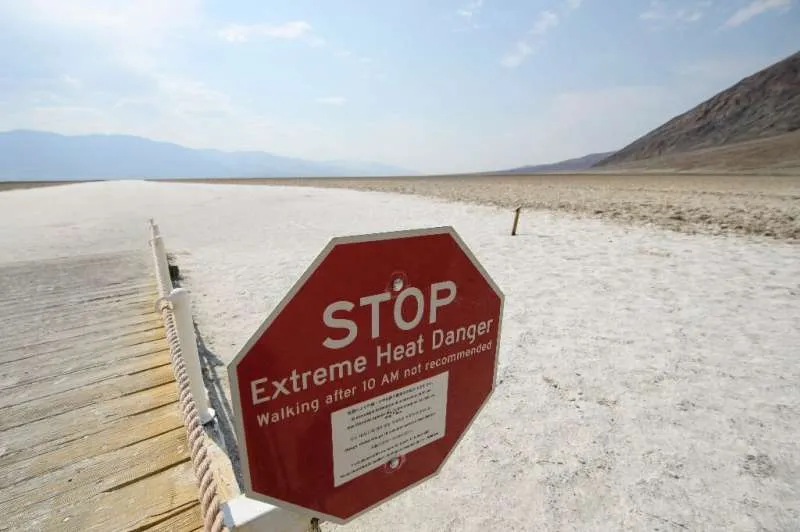As the official start of summer draws near, a relentless heatwave has already cooked the southwestern United States, turning parts of the region into veritable ovens. A whopping 34 million people were placed under heat alerts on Thursday afternoon, with warnings issued from the southern tip of Texas to the northern parts of California.
Expert warnings are dire, with experts predicting the unrelenting heat to continue through the weekend, potentially shattering daily temperature records and leaving entire communities on edge. The National Weather Service has issued dire warnings, forecasting a prolonged heatwave that could last for days, with temperatures soaring to perilous levels.
As the sun blazes down on the parched terrain, temperatures are expected to rise to alarming heights, with cities like Las Vegas, Nevada, and Phoenix, Arizona, pushing 110 degrees Fahrenheit for the first time this year. The same cities that have become notorious for their blistering summer temperatures are now facing a different beast: a heatwave that’s arriving weeks earlier than usual.
The consequences of this heatwave are far-reaching and deadly. Experts warn that the onset of chronic heat exposure can have devastating effects on the human body, ranging from subtle changes in behavior to life-threatening conditions. As the heat soars, communities are left reeling, struggling to cope with the escalating risks.
One of the biggest concerns is the impact on marginalized communities, who often lack access to cooling centers, air conditioning, and other vital resources. The poor, the elderly, and those living on the streets are particularly vulnerable to the heat, facing a gauntlet of health risks and hazards.
As the heat intensifies, so too do the warnings. “We’re looking at potentially record-breaking temperatures across the region,” said Dr. V Kelly Turner, an expert in heat equity and policy. “The consequences of chronic heat exposure can be profound, from heat-related illnesses to even fatalities.”

The hot weather is not just a regional issue; it’s a global phenomenon, driven by the relentless drumbeat of climate change. As the warming world continues to drive extreme weather events, heatwaves like this one are becoming more frequent, longer-lasting, and deadlier.
In California, heat-related deaths have skyrocketed in recent years, with some communities buckling under the pressure. In Phoenix, for instance, over 600 people died last year due to heat-related illnesses, a staggering increase of 50% from the previous year.
As the heatwave rages on, residents are left searching for ways to cope. In Chico, a small city in northern California, residents gathered in parks and pools to escape the sweltering heat. But for many, the heat is a persistent threat, one that’s difficult to ignore.
“This is not that bad to me,” said Stephan Jones, a local resident, as he sat in the shade with his toy chihuahua, Luna. “I didn’t even have to get into the water.” Jones’ remarks were echoed by many others, who seemed to regard the heat as a normal part of life.
Yet, for those living on the margins, the heat is a constant, deadly threat. “We’re doing our best to get life-saving supplies out to people living on the streets,” said Lauren Kennedy, program coordinator for Safe Space, a non-profit that operates shelters during extreme weather events. “The heat is particularly deadly for people who are living outside, on certain medications, or with sensitive health conditions.”

